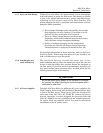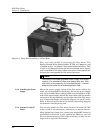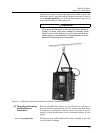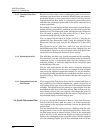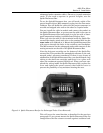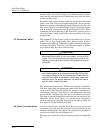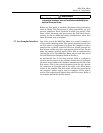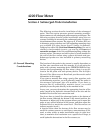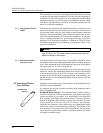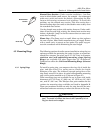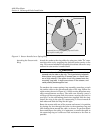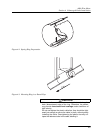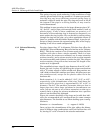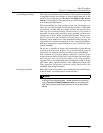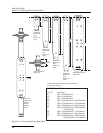
4-1
4220 Flow Meter
Section 4 Submerged Probe Installation
The following sections describe installation of the submerged
probe. The first section presents general mounting consider-
ations common to all submerged probe mounting techniques. The
following sections describe probe installation using the two
systems available for mounting the submerged probe in pipes or
round-bottomed flow streams. For pipes up to 15 inches (38.1 cm)
in diameter, spring stainless steel self-expanding mounting rings
are available. For pipes larger than 15 inches in diameter,
Teledyne Isco offers the Universal Mounting Ring. For use in
similarly-sized manhole inverts, you can use the base and
extension sections of the Universal Mounting Ring without the
scissors section. The straps are held in place by studs installed in
the wall of the flow stream using a power-activated stud gun.
Submerged probes are also installed in primary measuring
devices.
4.1 General Mounting
Considerations
The location of the probe in the stream is usually dependent on
the flow rate conversion used. For example, if you are using the
probe with a primary measuring device (WEIR/FLUME flow con-
version when programming the flow meter), there is a specific
location for the probe with each primary device. The Isco Open
Channel Flow Measurement Handbook provides much useful
information in this regard.
If you want to measure flow using a gravity flow equation, such
as the Manning equation, you will generally install the probe in
the entrance (upstream) pipe of a manhole. If you want to
measure flow by calibrating a manhole invert, you would
probably locate the probe directly in the manhole invert.
In any case, you must determine the appropriate location of the
probe, based on the hydraulic characteristics of the site and the
method of level-to-flow rate conversion used.
You do not have to install the submerged probe at the bottom of
the flow stream. Although the bottom is the normal position, the
Parameter to Adjust step in the program allows you to mount the
probe at any vertical location in the stream, and then adjust the
indicated level to match the actual level. (The flow meter can
indicate negative levels.)
A location other than the bottom of the flow stream may be
useful for various reasons: to avoid heavy concentrations of silt,
sand, or other solids; to make installation easier in tight loca-
tions; to maximize level resolution over a specific level range; to
avoid hydraulic obstructions in the flow stream, etc.



